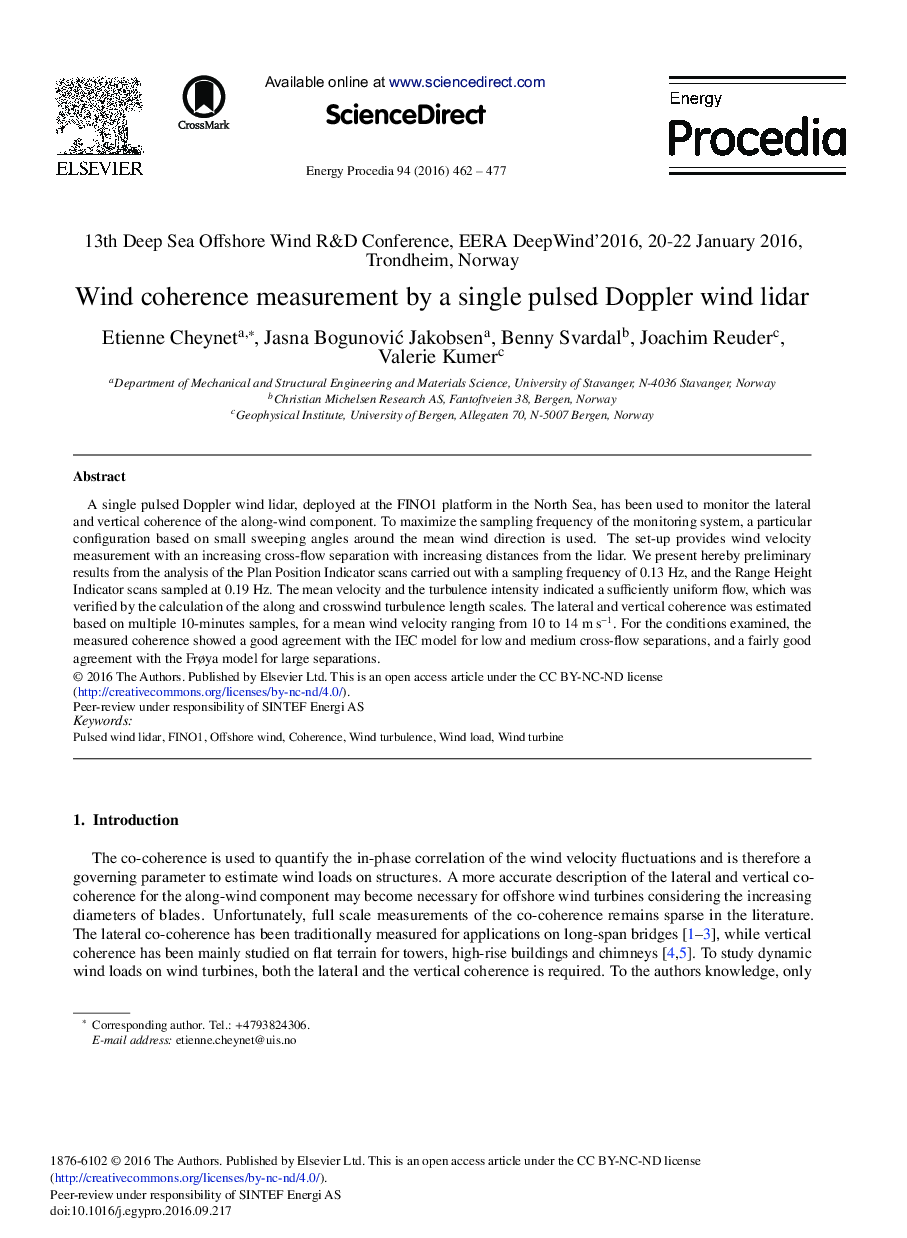| Article ID | Journal | Published Year | Pages | File Type |
|---|---|---|---|---|
| 5447006 | Energy Procedia | 2016 | 16 Pages |
Abstract
A single pulsed Doppler wind lidar, deployed at the FINO1 platform in the North Sea, has been used to monitor the lateral and vertical coherence of the along-wind component. To maximize the sampling frequency of the monitoring system, a particular configuration based on small sweeping angles around the mean wind direction is used. The set-up provides wind velocity measurement with an increasing cross-flow separation with increasing distances from the lidar. We present hereby preliminary results from the analysis of the Plan Position Indicator scans carried out with a sampling frequency of 0.13 Hz, and the Range Height Indicator scans sampled at 0.19 Hz. The mean velocity and the turbulence intensity indicated a sufficiently uniform flow, which was verified by the calculation of the along and crosswind turbulence length scales. The lateral and vertical coherence was estimated based on multiple 10-minutes samples, for a mean wind velocity ranging from 10 to 14 m s-1. For the conditions examined, the measured coherence showed a good agreement with the IEC model for low and medium cross-flow separations, and a fairly good agreement with the Frøya model for large separations.
Related Topics
Physical Sciences and Engineering
Energy
Energy (General)
Authors
Etienne Cheynet, Jasna BogunoviÄ Jakobsen, Benny Svardal, Joachim Reuder, Valerie Kumer,
